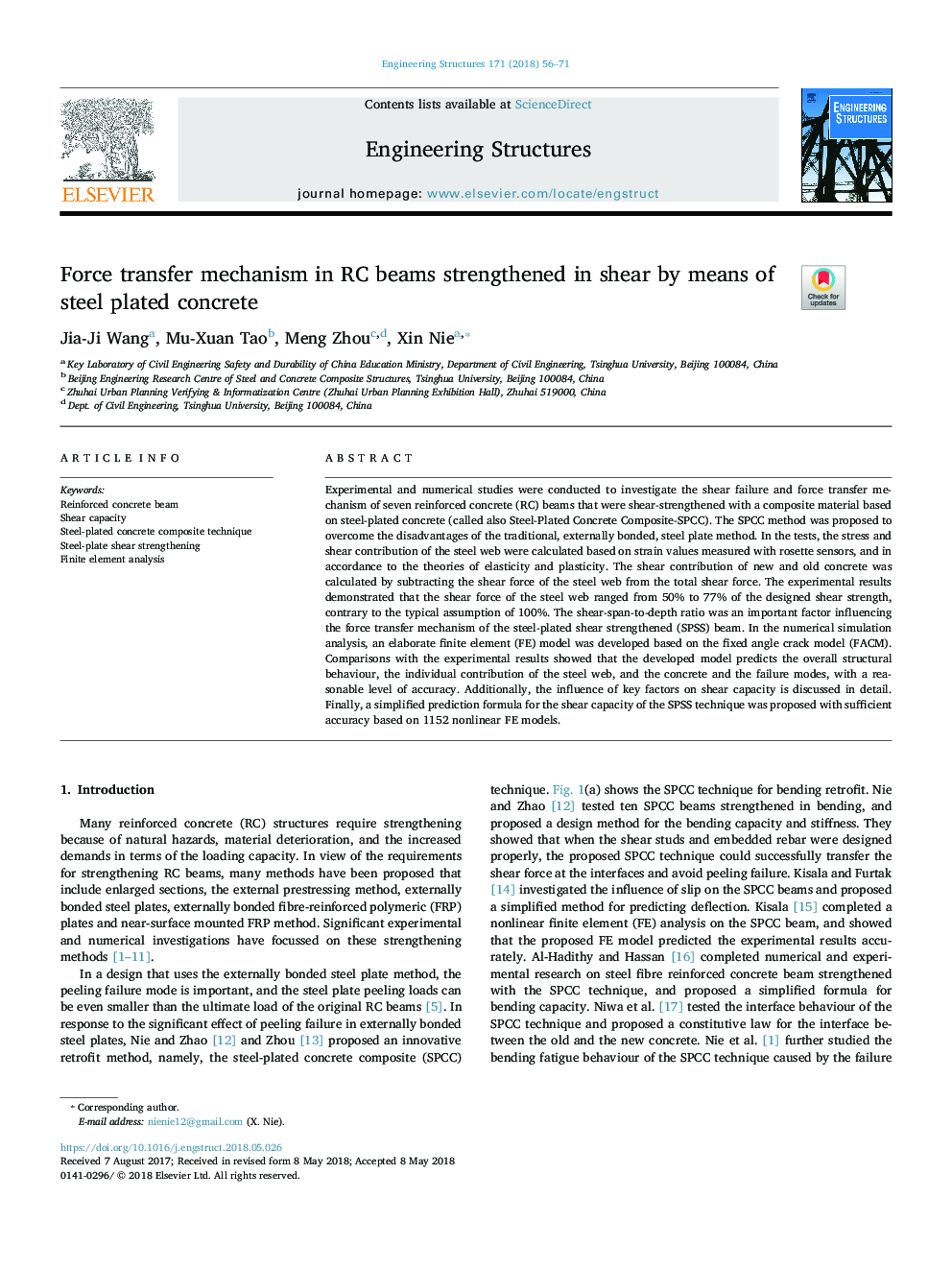| Article ID | Journal | Published Year | Pages | File Type |
|---|---|---|---|---|
| 6736024 | Engineering Structures | 2018 | 16 Pages |
Abstract
Experimental and numerical studies were conducted to investigate the shear failure and force transfer mechanism of seven reinforced concrete (RC) beams that were shear-strengthened with a composite material based on steel-plated concrete (called also Steel-Plated Concrete Composite-SPCC). The SPCC method was proposed to overcome the disadvantages of the traditional, externally bonded, steel plate method. In the tests, the stress and shear contribution of the steel web were calculated based on strain values measured with rosette sensors, and in accordance to the theories of elasticity and plasticity. The shear contribution of new and old concrete was calculated by subtracting the shear force of the steel web from the total shear force. The experimental results demonstrated that the shear force of the steel web ranged from 50% to 77% of the designed shear strength, contrary to the typical assumption of 100%. The shear-span-to-depth ratio was an important factor influencing the force transfer mechanism of the steel-plated shear strengthened (SPSS) beam. In the numerical simulation analysis, an elaborate finite element (FE) model was developed based on the fixed angle crack model (FACM). Comparisons with the experimental results showed that the developed model predicts the overall structural behaviour, the individual contribution of the steel web, and the concrete and the failure modes, with a reasonable level of accuracy. Additionally, the influence of key factors on shear capacity is discussed in detail. Finally, a simplified prediction formula for the shear capacity of the SPSS technique was proposed with sufficient accuracy based on 1152 nonlinear FE models.
Related Topics
Physical Sciences and Engineering
Earth and Planetary Sciences
Geotechnical Engineering and Engineering Geology
Authors
Jia-Ji Wang, Mu-Xuan Tao, Meng Zhou, Xin Nie,
